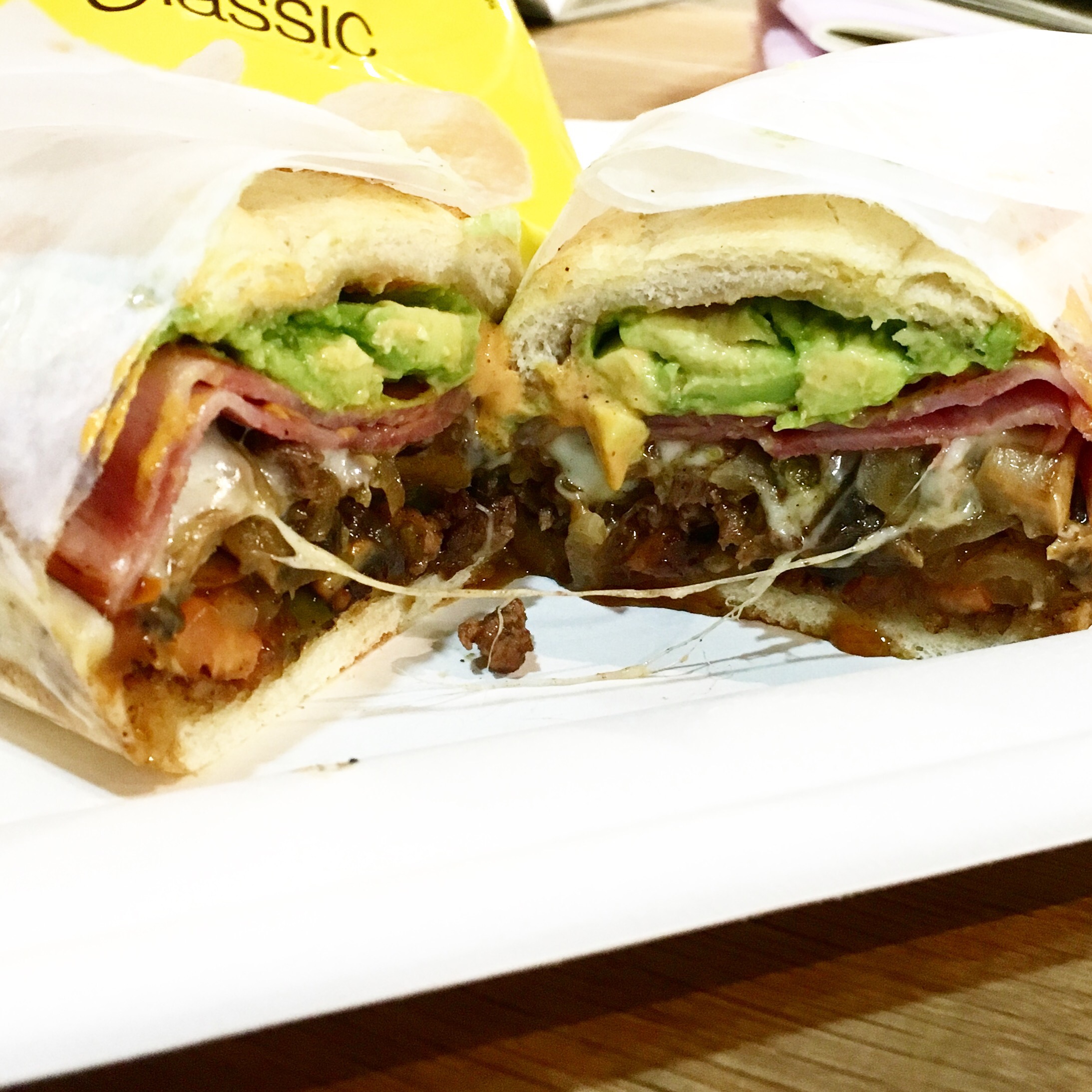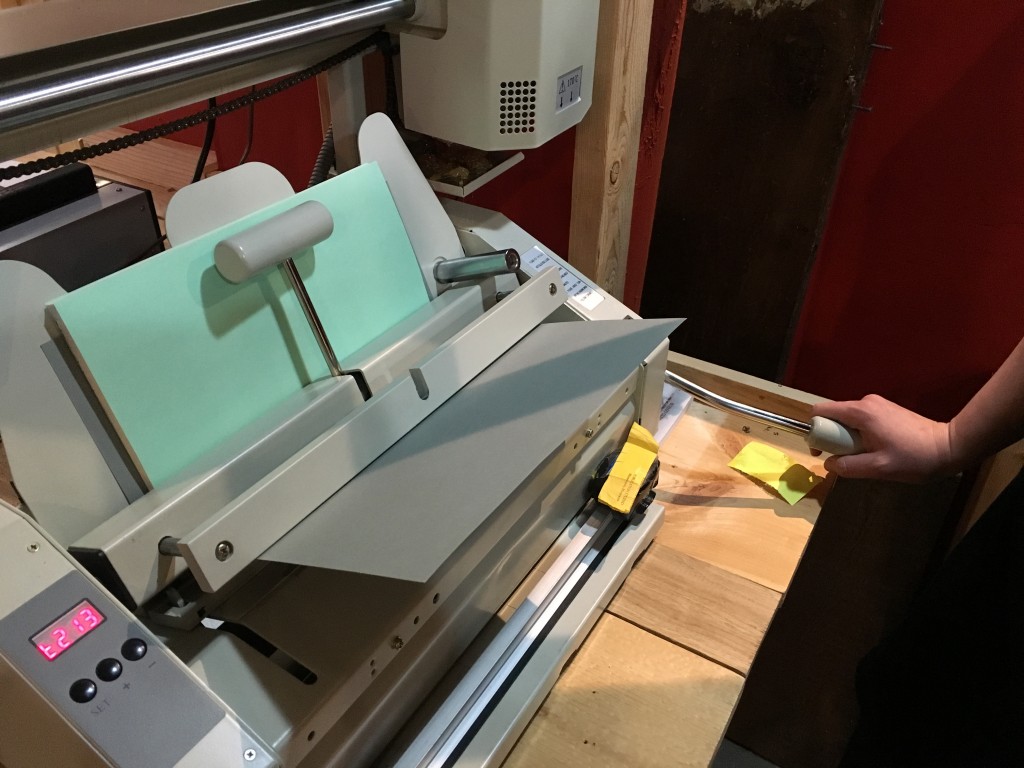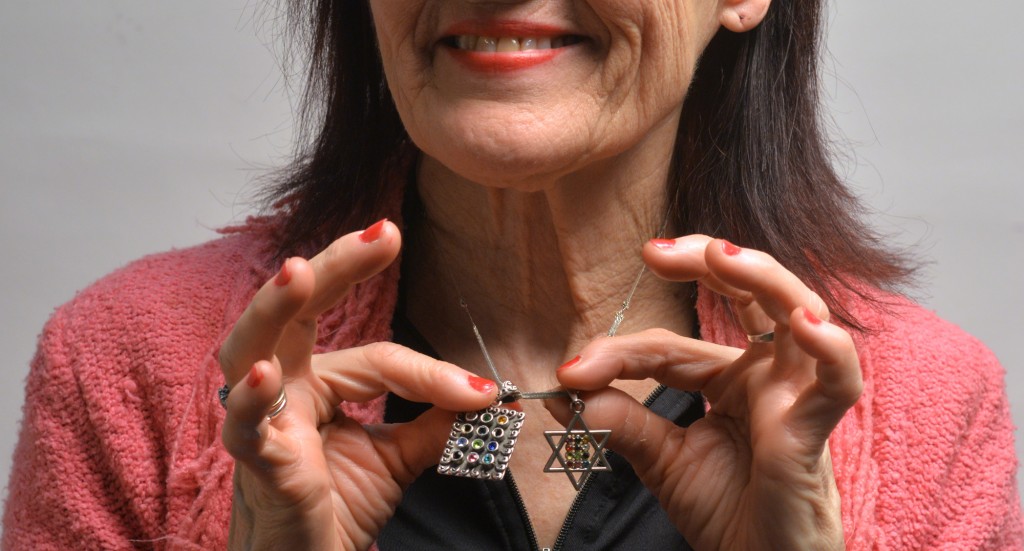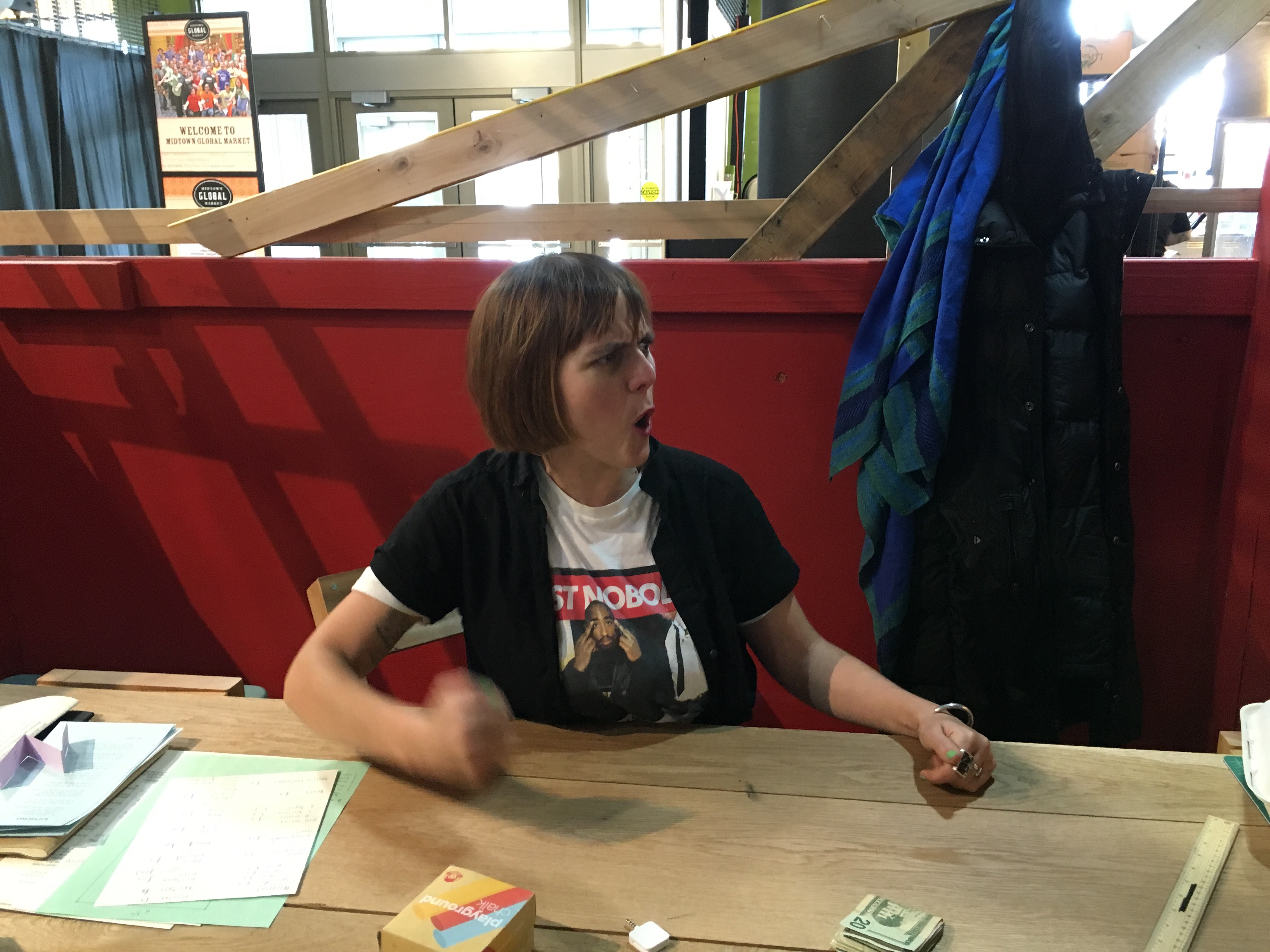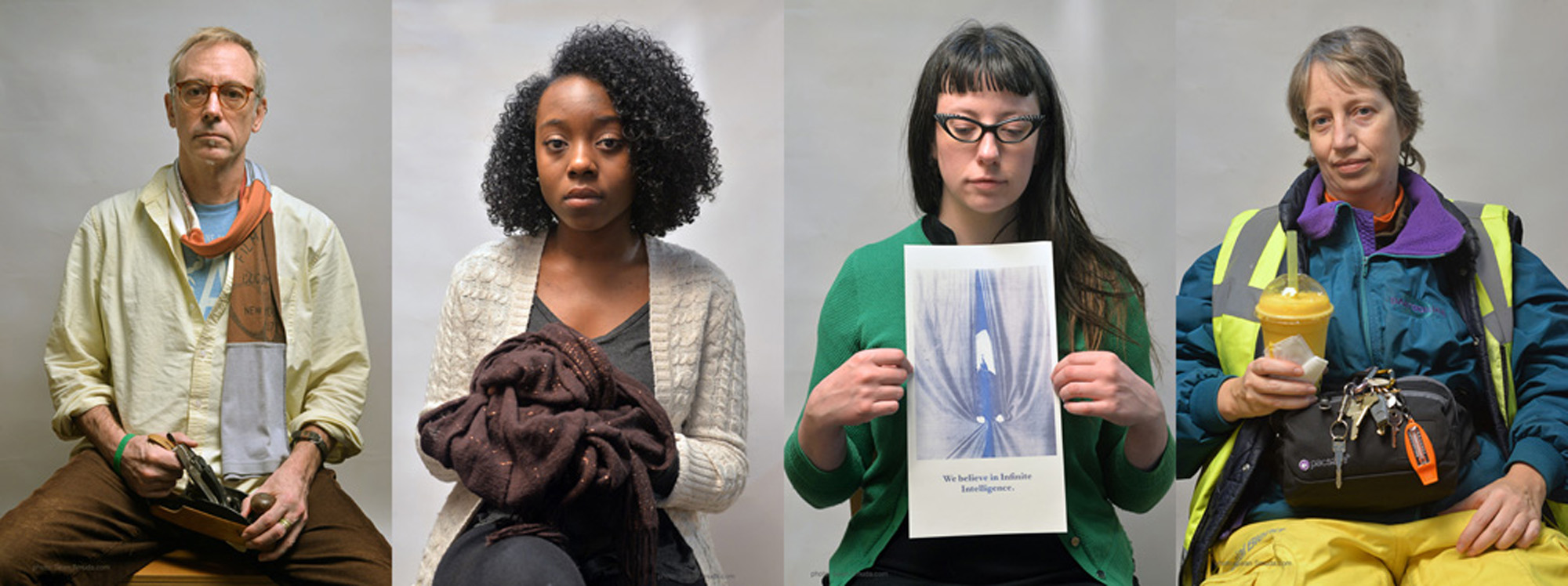More fellowship… Manny needed a menu layed out and printed. Later he brought Lacey and I torta’s!
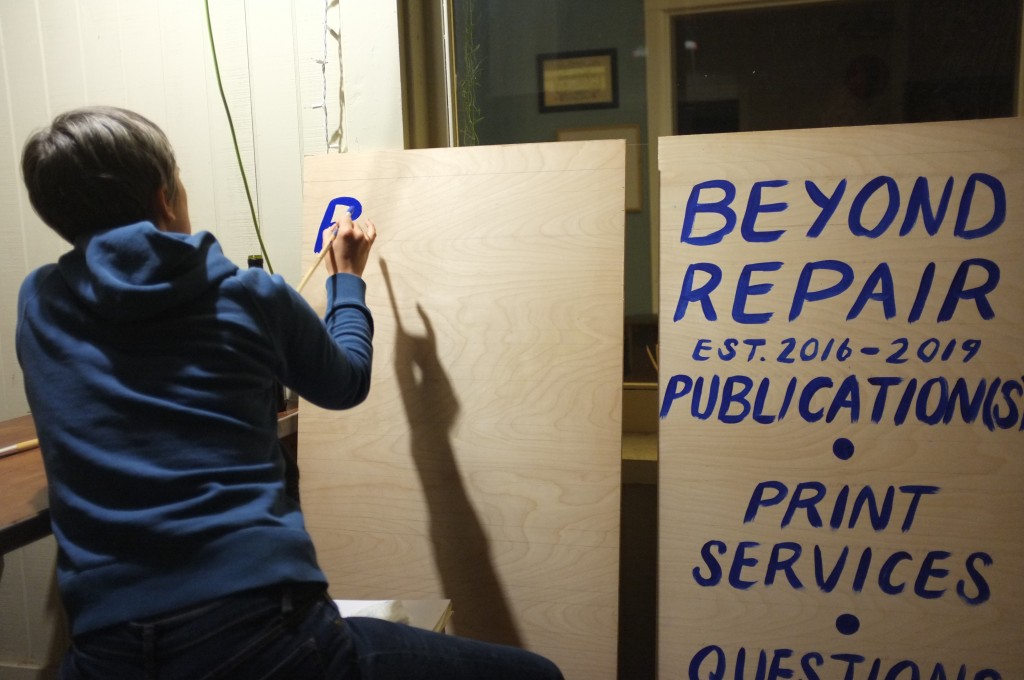
Our old friend, Helena Keeffe, came into town the other day to celebrate May Day and, simply, hang out. I first met Helena, and her then boyfriend, now husband, Joseph Del Pesco here in Minneapolis when Laura and I were visiting Laura’s family way back in 2001. At the time Joseph was the curator at the Soap Factory here in MPLS.
A few years later Helena and Joseph moved out to San Francisco so that he could start attending the curatorial grad program at California College of the Arts. Not long after that I started teaching at CCA in the newly formed graduate department for Social Practice. As I was still living in Portland I’d fly down for the times I taught and Joseph and Helena were always around, knocking on the window of our friend Jen Rhoads’s house – their neighbor who I’d introduced them too – asking if I wanted to go down the road to get a breakfast burrito at our favorite West Oakland taco truck. All said, we’ve always kept in touch, experienced one another’s ideas and projects in various states both at home and out in the world.
When Helena was in town it made me think, “Oh, can you paint the shops sign?” Of course she said yes. I knew I couldn’t do it as I hate looking at my hand-writing all day. So, I cooked dinner for her and Laura and the kids while Helena sketched out the measurements for the lettering. After the family went to bed we stayed up as Helena painted our new signs and we talked into the night.
I bring all of this up as it represents exactly the type of work and exchange that form around affectionate relationships – you don’t think of it as work, and you certainly don’t feel you are “giving something away” through the exchange. It’s people coming together to make one another’s lives happier, easier, and more appealing. When I say “affectionate” I mean both kindness and care and love, but I also mean “affect,” the way that all of those qualities change you when you allow people and the world to make you who you are, when you allow yourself to be changed through proximity to others.
All of this could seem slight, and in some ways – quite wonderfully – it is. When it gets to the point that it is reflexive and organic, mundanity can seem like symbiosis. When considered more deeply, even these small moments – making a sign for a friend, cooking for one another; a simple exchange of skills and values – can seem, and be, mutual aid as Kropotkin thought of it, or like Morris’s ideas of fellowship.
Sun, May. 15, 2016 ⁄ 4:30–6:00pm
Food Enough? – Soil Lab
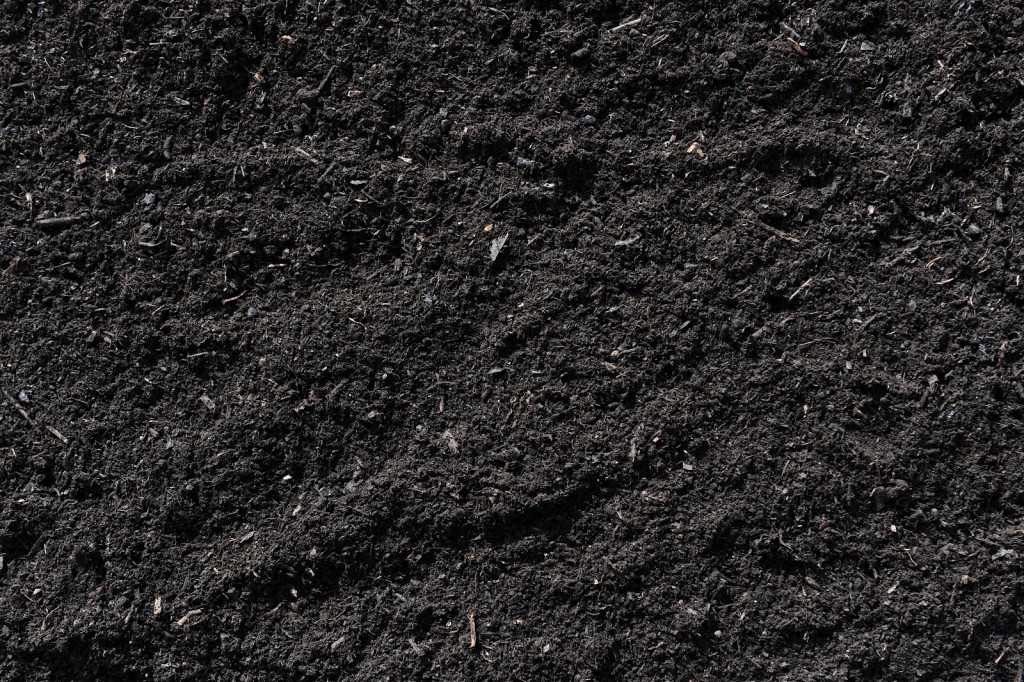
Since the beginning of the year a group of 9th Ward neighbors, environmental explorers, and urban farmers have been meeting together with the Twin Cities Agricultural Land Trust at the experimental publication site, Beyond Repair, in the Midtown Global Market. We’ve called our get-togethers Food Enough? We’ve gathered to discuss ideas and possibilities around truly equitable food land use in the Twin Cities and how the meeting of like minded yet disparate skills and knowledge can help put into place a landscape that is more abundant and fruitful than we’ve yet to imagine.
On May 15, at 4:30pm, we invite you to bring a handful of soil to explore, and talk with the conveners of the Soil Lab project and neighbors interested in our relationships with soil. What lives in the soil here? What can we learn from soil about ourselves and our surrounding systems, and therefore what can it teach us about equity and inequity, about our neighborhoods and societies?
We invite you to join us, add your thoughts, and broaden the ideas and experiences within Food Enough? towards future conversations and actions.
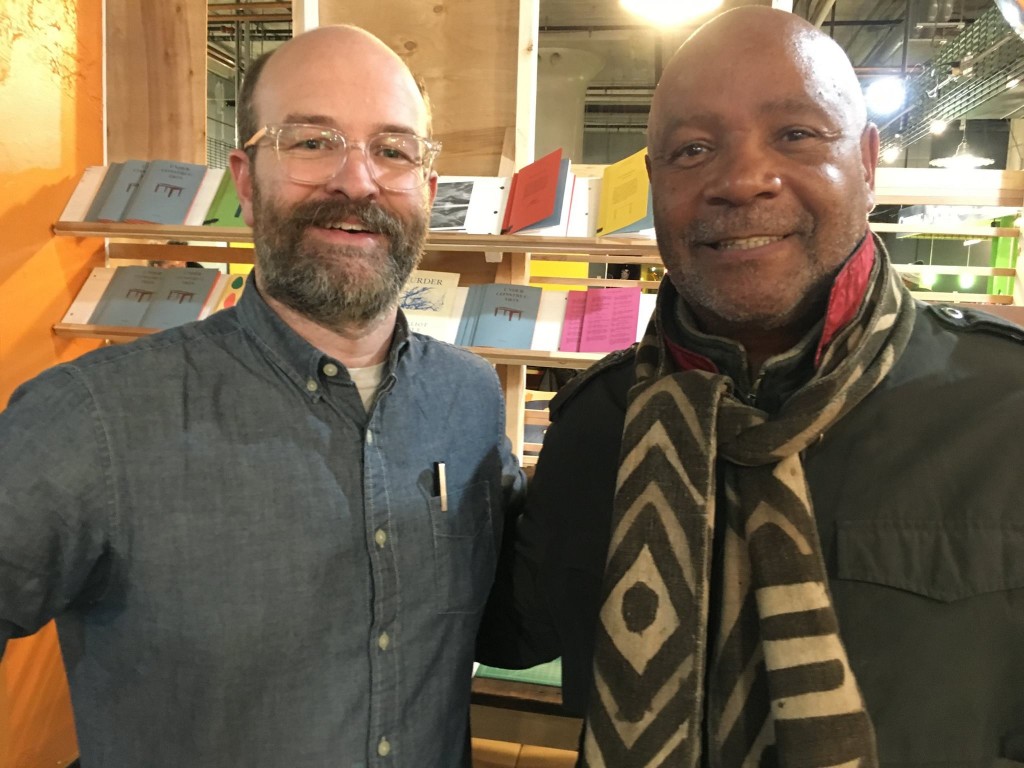
Lacey got our conversation with Emory Douglas down to 1′ and 0’s and we’re in the midst of cleaning it up. I cannot wait to get this out into the world! Here’s a quick taste…
Sam: So, in that way, you have the BPP doing something similar to, say the Wobblies at the turn of the century — of being on the street corner, being visible, saying, “look, here’s this thing and here’s the person attached to it. You could also be that person.”
Emory: Yeah, absolutely. We had a paper — 6:00 o’clock in the morning, people had assignments to go sell the papers. It was at the subway, the bus stations or wherever that may be.Sam: In that sense was the history and methods of, say, the Wobblies or the black press leading up to your work at the paper in your minds at the time?
Emory: Yes, yes. Because the context and the content was the connection.
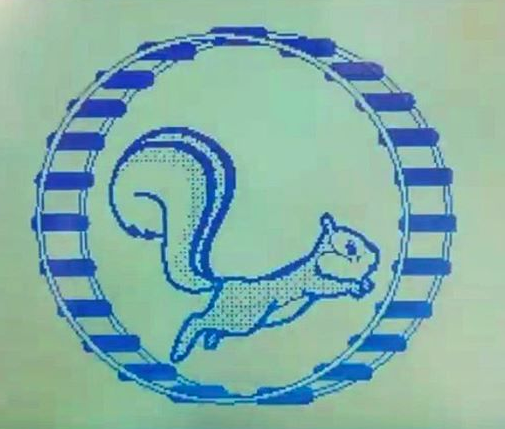
The new Riso we got at the shop uses this moving graphic when it needs you to wait before taking the drum out of the machine. We have determined it is a chipmunk.
We have decided to name the machine based on this graphic, and seeing that Riso is a Japanese company it seemed only right that we should use the Japanese name for Chipmunk.
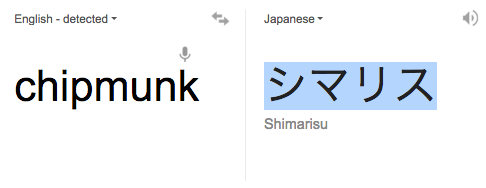
So, if you come into the shop and ask “what’s that machine over there,” we’ll answer, “Oh, that’s Shimarisu.”
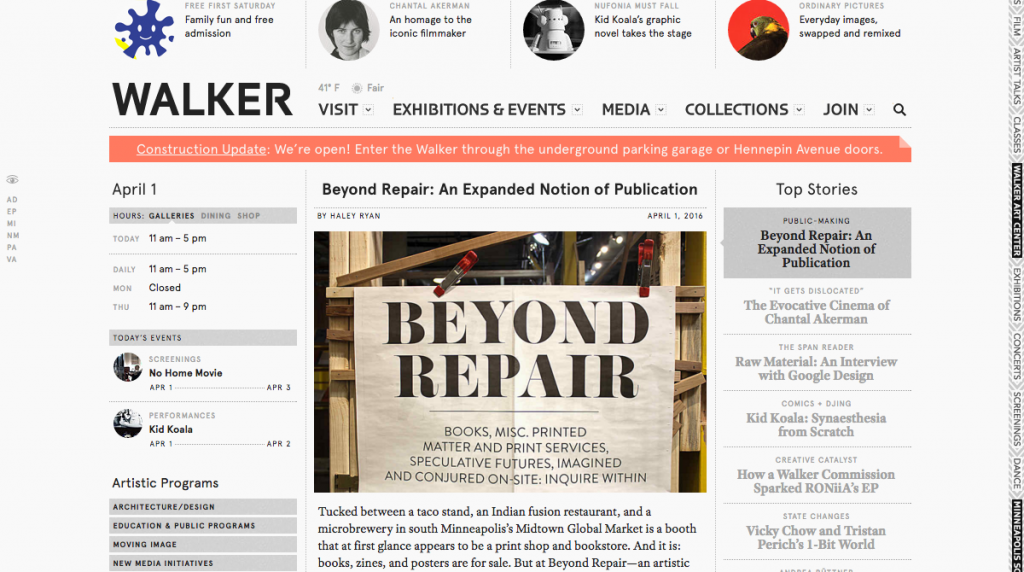
The Walker Art Center just published this really great piece about the shop and the theories and interests of the project in full. Check it out.
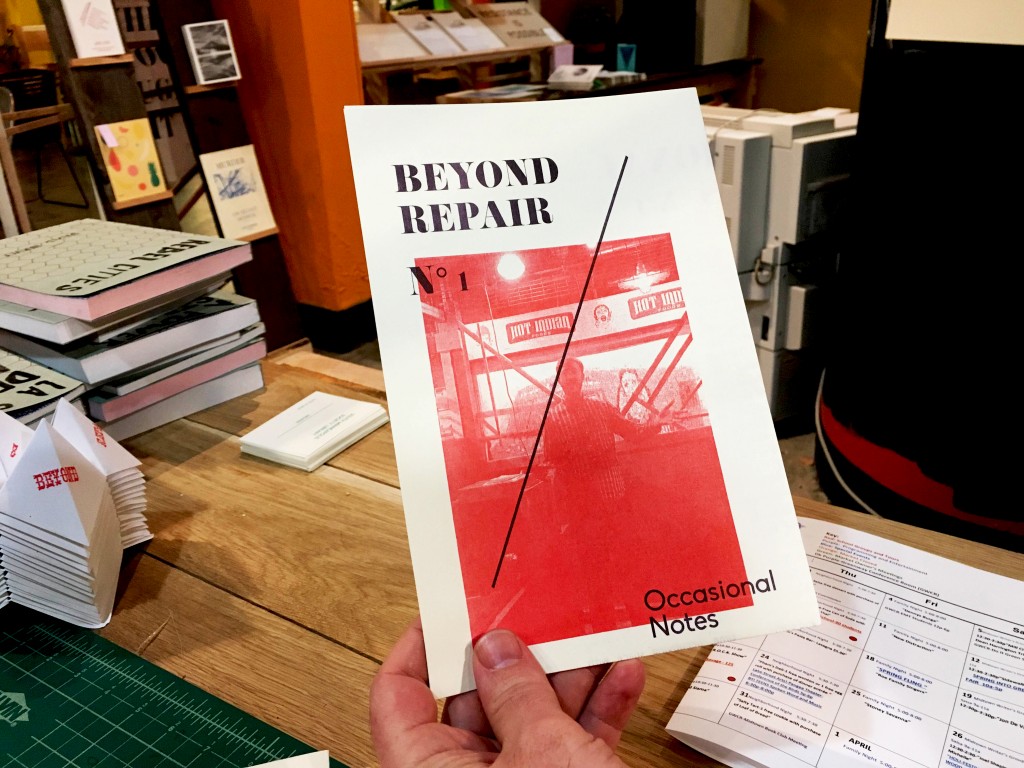
As a way to move more complex reflections around the neighborhood, both on and offline, we’ll be producing a series of broadsheets, intermittently produced, that reflect both our own experiences facilitating the space and assisting the ideas and interests of those who step into it, as well as making light of urgent ideas and actions within the neighborhood on a whole.
Free, as it should be – these are communiques after all – Occasional Notes Nº1 is currently available within the shop to take, read, and distribute as you wish, dropped off throughout the neighborhood, and posted here on the site, to read on whatever device you are currently tuned into. Enjoy.
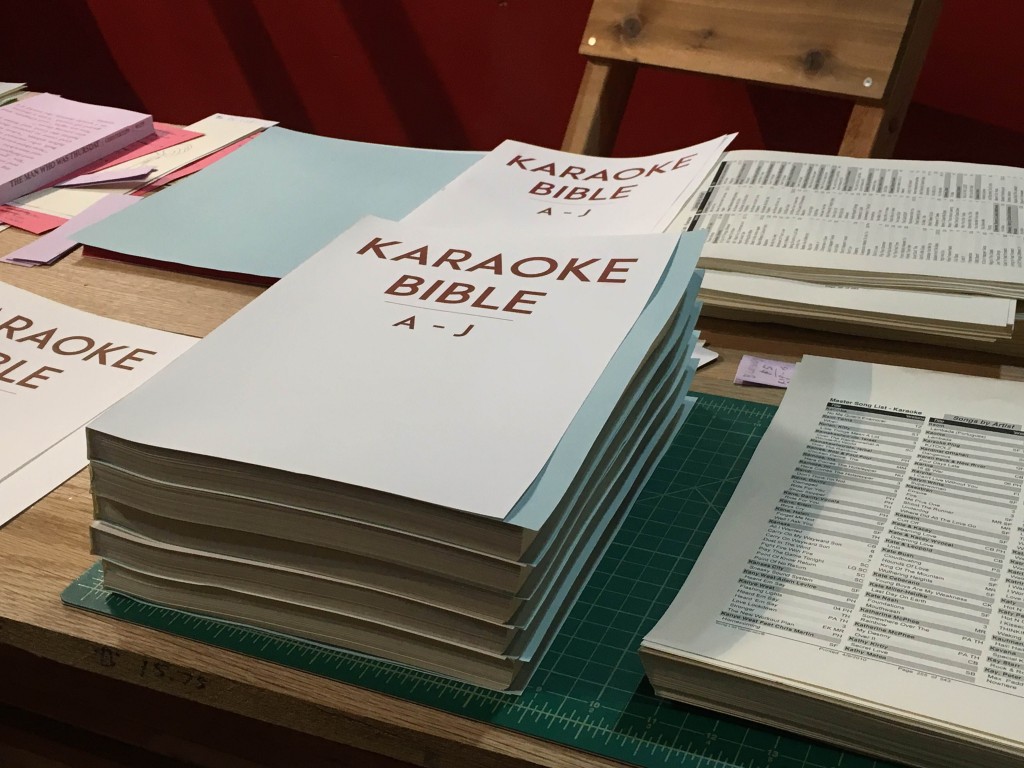
Not a non-profit, not started through the largess of some grant, Beyond Repair looks – and attempts to make transparent – the varying economies which can support a critical socially engaged art project within the marketplace.
One way we’ve been keeping the doors open is by doing print service work for people. For instance, a karaoke DJ came in not long ago and asked us to print his “karaoke bible” for him – done! We’ve printed wedding invitations for one the bartenders over at Eastlake Brewery next door to us, bound chap books for local artists, and are currently working on printing a book for a local children’s reading specialist organization.
If you have a small print project that you are looking to do, think about Beyond Repair doing the job for you. Not only are we fairly priced for artists, activists, and everyone else, your dollars go towards keeping a complicated, weird, political art project in plain sight.
Calling all 9th Ward neighbors (that’s Powderhorn, Central, Phillips…) and Twin Cities residents interested in our neighborhood: Beyond Repair has started a Publication Residency called 9W / PRP. If you are interested in forming a public around ideas and issues within the 9th Ward, reach out to us so we can help you realize your ideas through the tools and processes available within the shop.
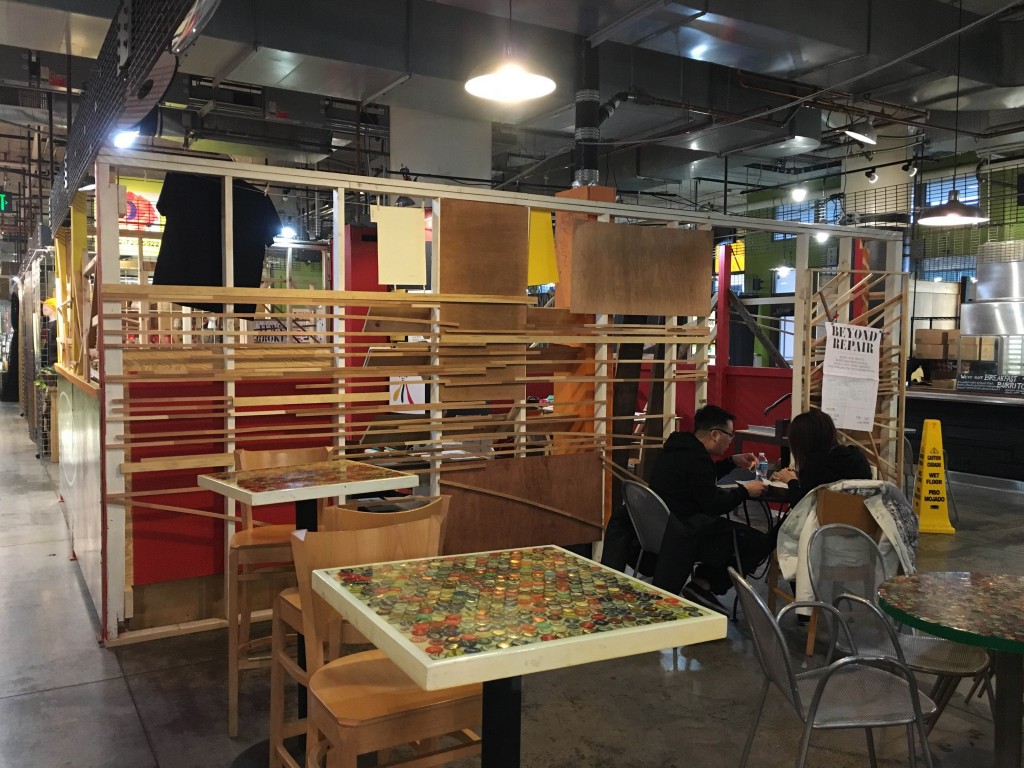
Sun, Mar. 6, 2016 ⁄ 4:00–7:00pm
Beyond Repair… We Think we Might be Open Now
We’ve been open for two months now and we might just be getting the hang of it. So maybe it’s time to host a “grand opening,” right?
Come and see all the titles that have been published in the last two months. Learn about what’s coming up in the near future. What should one expect from such an occasion?
-
We’ll have new work from Fiona Avocado, our first resident within our 9th Ward Publication Residency Program.
-
A new publication from our head librarian at the South Minneapolis Society Library, Lacey Prpic Hedtke, entitled We Believe in Infinite Intelligence, a pocket guide overview of Spiritualism.
-
The first release from Wooden Leg Print & Press and Uncivilized Books co-imprint on utopianism and utopian histories.
-
The grand re-opening of the South Minneapolis Society Library. Get your library card today! Check out books!
-
$2 off your beer at Eastlake Brewery with a purchase a book, $1 off with a purchase of a booklet.
If you haven’t been down to Beyond Repair, here’s your chance to come and say hello, learn about what our hopes for the project are, and imagine what we can build together with your involvement and support.
So far…
-
We’ve hosted Emory Douglas and will be making a book out of our conversation with sales going to create programming and projects addressing the role and conduct of the 3rd precinct within the neighborhood.
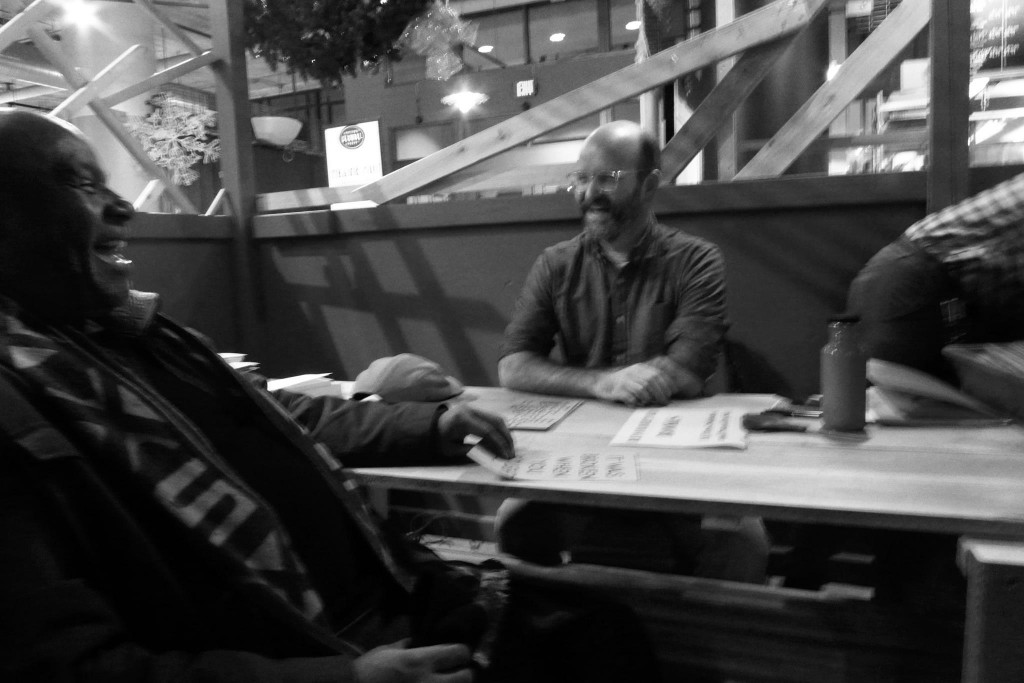
-
Each Saturday a pop-up portrait studio has materialized through Sean Smuda‘s project What’s Your Beauty and Will You Share it With the World?

-
The Undercommons Reading Group has begun to meet each Saturday evening around Fred Moten and Stefano Harney’s book The Undercommons: Fugitive Planning and Black Study.
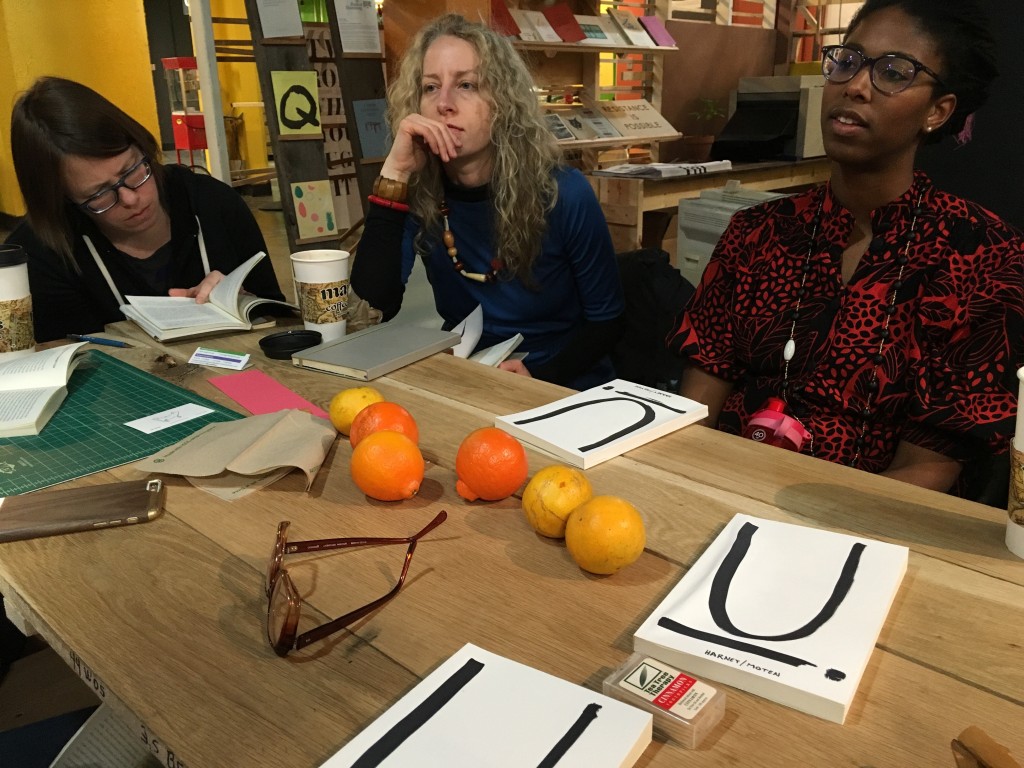
-
We’ve devised a “Rent Check” editions project with new artists making work based on our actual rent check each month as a means to sustain Beyond Repair and preserve its autonomy. We released the first Rent Check with an edition by Josh MacPhee in February.
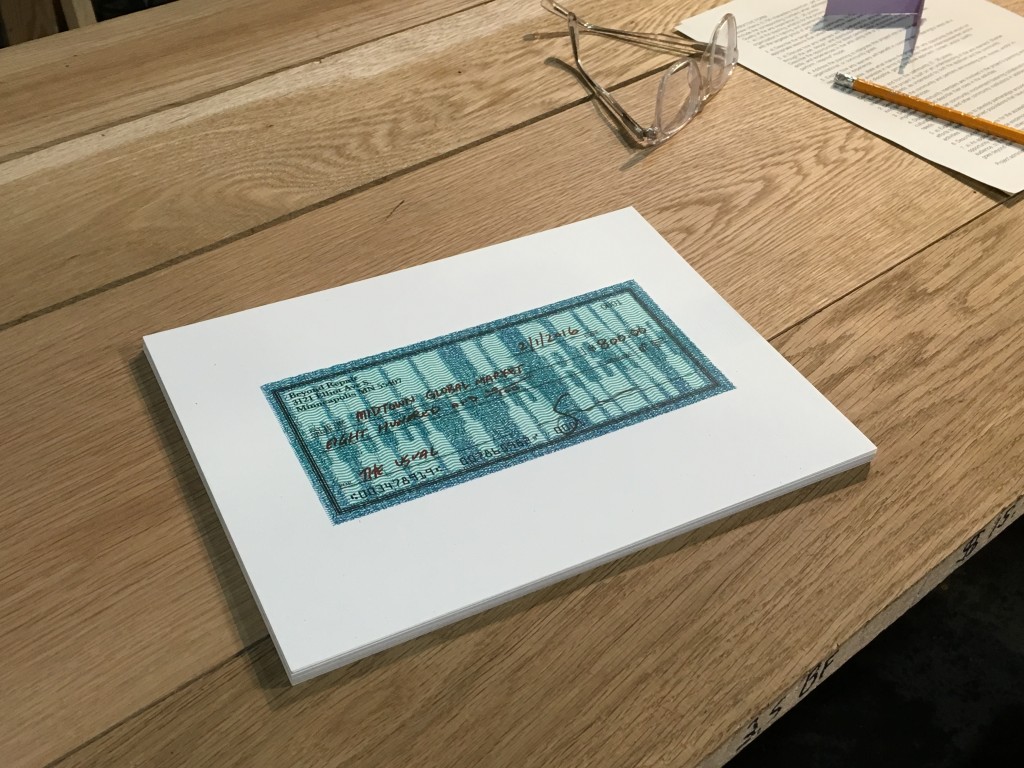
-
Three groups have begun to emerge (public defenders, food access advocates, and health professionals) all engaging the question, in one form or another, “What does a healthy neighborhood look like?”
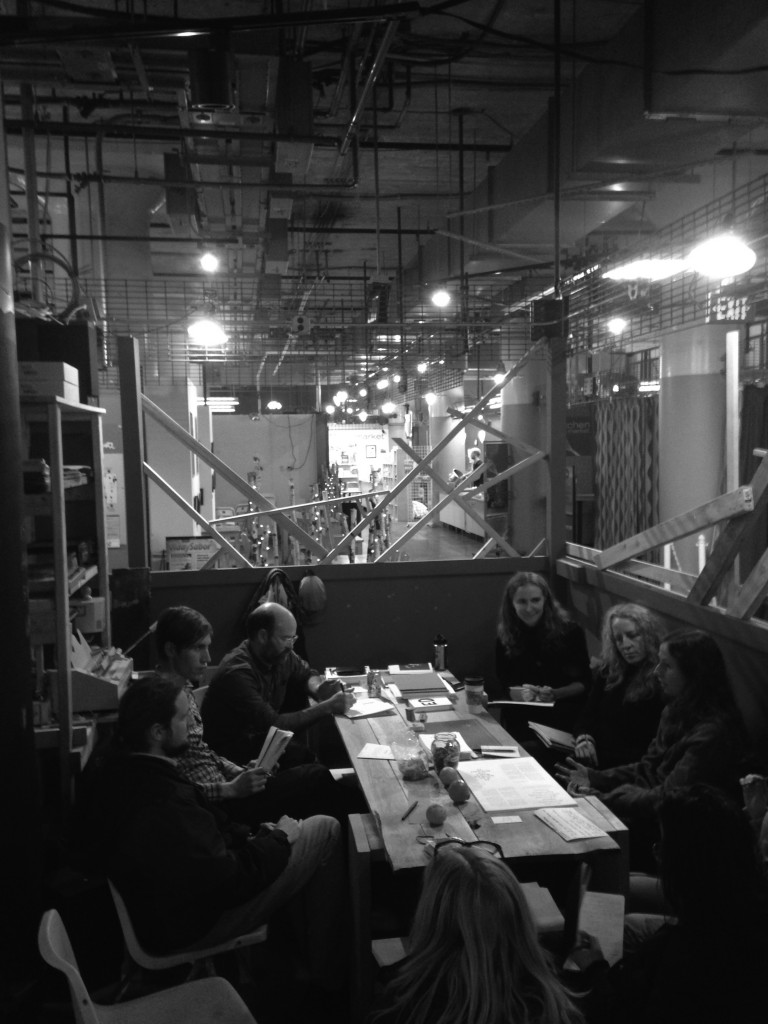
-
Oh, and we’ve been making lots and lots of books, with way more to come!
Hope to see you there!
Sat, Feb. 13, 2016 ⁄ 2:00–5:00pm
What’s Your Beauty and Will You Share it With the World?
“Thanks for participating in “What’s Your Beauty and Will You Share it with the World”! I’m hoping you’ll write a few sentences about your object and its beauty. Even better if you include something about the neighborhood, e.g. if you have a special spot of beauty you look forward to walking by, how you’ve seen the neighborhood change, story or rumor…. I ran the Shoebox Gallery on the corner of Chicago and Lake for eleven years and am planning a book about it. Your input would be a great help towards a portrait of the neighborhood!
Sincerely,
Sean Smuda”
Session #3 of , Sean Smuda’s 9th Ward portrait project again will set up shop within Beyond Repair this Saturday, as it will each Saturday for the time being. Join us accompanied by an object you find beautiful. Sean, in time, will be compiling his portraits, and his questions about the changing tenor of Lake St. over the last decade, into a book to be published through Beyond Repair.
Sat, Feb. 13, 2016 ⁄ 6:00–8:00pm
Undercommons Reading Group

“In this series of essays Fred Moten and Stefano Harney draw on the theory and practice of the black radical tradition as it supports, inspires, and extends contemporary social and political thought and aesthetic critique. Today the general wealth of social life finds itself confronted by mutations in the mechanisms of control: the proliferation of capitalist logistics, governance by credit, and the management of pedagogy. Working from and within the social poesis of life in the undercommons Moten and Harney develop and expand an array of concepts: study, debt, surround, planning, and the shipped. On the fugitive path of an historical and global blackness, the essays in this volume unsettle and invite the reader to the self-organised ensembles of social life that are launched every day and every night amid the general antagonism of the undercommons.”
Can we ethically release ourselves from a social moment that we find reprehensible? What about those we leave behind? Politically, socially, ethically can an individual be in two places at once? How do we live within contradiction and feel empowered, not hypocritical?
The Undercommons Reading Groups meets each Saturday evening from 6 – 8, usually followed with some beers and tacos at Eastlake Craft Brewing.
Free “bootlegged” paperback copies are available at Beyond Repair. For those yet to attend, a PDF is available here.
All levels and interests of inquiry welcome, from the theoretical to the deeply practical and local.
“Beyond Repair provides value that can’t be quantified or qualified with capital or numbers. It is wildly human. A project like Beyond Repair offers far more than a storefront for enlightened consumerism; it cracks the framework of profit and measurable “success” to allow experiences, conversations, stories, people’s real feelings and emotions, a chance to slip through, to be experienced by an extended community in authentic, unpredictable ways.”

Over the next year Beyond Repair will act as the site for three groups to meet, each asking in one form or another, “What does a healthy neighborhood look like?” One of these groups, Food Enough? consists of environmental academics, urban farmers, and food access / justice activists. We met for the first time yesterday and plan to meet on Sunday afternoons every other week.
With our last post in mind, one thing we’ve have been thinking about of late is how to make Beyond Repair more accessible for neighbors who are hard of hearing. It’s really god damn loud in the Market and sometimes it is difficult to hear when we are having conversations around the table, or are hosting a lecture or reading. Certainly, amplification is one answer, but we’d also like to consider ideas that don’t highlight individuals through amplification. Sometimes having to be on the mic can be intimidating for folks, as well, I’d argue it can create a false divide between individuals within conversation. And so, what sorts of baffling / sound muffling devices can we add to Beyond Repair to think about these needs for those who join us that need things more quiet to help them hear?
Any thoughts are greatly appreciated. Please feel free to post ideas to our Facebook page or email us at [email protected]
Here’s an amazing video illustrating why legislation like the ADA is so necessary. But past that, why we – as humans outside of government – should be thinking about the whole of society, not just those who look and move and travel throughout the world just like us. Thanks art for making all of this so easy and enjoyable to understand.
Jeremiah Bey – frequent Beyond Repair friend / collaborator / etc – wrote the following within a post on Facebook today. How do we engage these attitudes, and their forms, which Jeremiah talks about? Not just on the local level, but cycled even further down, to the neighborhood? Many of us know that there are certain officers on the payroll within the 3rd Precinct known for abusive tactics. What more don’t we know? Past that, the very knowledge – passed from person to person – that these tactics exist within a neighborhood power structure (one with guns, other weapons, and impunity), how does that affect the psyche of a neighborhood? Terror exists in many forms and is utilized for many varied gains:
“Richard Zuley is not black, but he is a part of Black History. I will not consider this my Black History post of the day, but it’s something we should all know and understand.
Richard Zuley is the poster child for police corruption as an institutional problem. He was a Chicago PD homicide detective who created a department wide culture of torturing black and brown Chicagoans into murder confessions. When he retired from the CPD, he was invited to teach and facilitate his torture techniques at Guantanamo Bay.
Yes, his torture techniques were not only widely known about within the field of American law enforcement, they were admired. So much so, that the CIA wanted to learn from him.
Richard Zuley’s career didn’t come under scrutiny until after his retirement during a brutal “interrogation” of a Guantanamo detainee. The detainee, Mohamedou Ould Slahi, endured extensive abuse from Zuley, including a threat that Zuley would bring Slahi’s mother in to be raped by other inmates.
Zuley is also being accused of planting evidence on murder suspect, Lathierial Boyd, in 1990. During the arrest at Boyd’s expensive downtown loft, Zuley was heard telling him “no nigger is supposed to live like this”.
The Guardian wrote:
“Dick Zuley’s history as a military interrogator at Guantánamo and a police interrogator in Chicago scrambles that narrative. It suggests a continuum between police abuses in urban America and the wartime detention scandals that continue to do persistent damage to the international reputation of the United States.
Chicago, in particular, has its own deep and infamous history with police torture, with black Chicagoans its primary victims.”
Michelle Alexander encouraged us to begin connecting the dots. People like Richard Zuley not only connect dots, they sew entire seams together. My question is, just how many Richard Zuley’s are there? And if naming them could become an endless and futile game, then where should our energy be put to stop them?” – Jeremiah Bey
We’ve started a new series, Rent Check. We work with a new artist each month to make a print based off our actually rent check. Josh MacPhee started things off. So cool!!
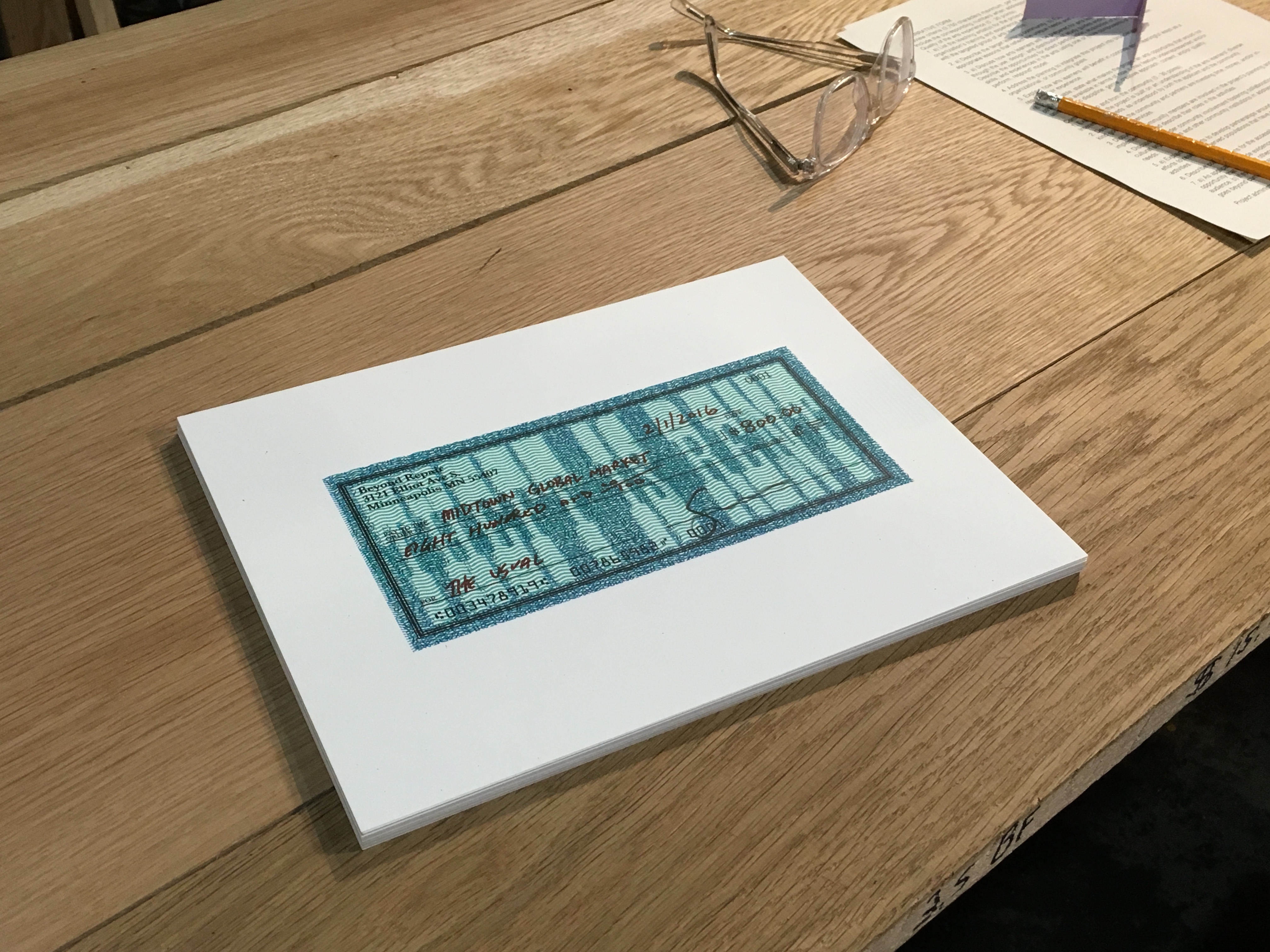
“Thanks for participating in “What’s Your Beauty and Will You Share it with the World”! I’m hoping you’ll write a few sentences about your object and its beauty. Even better if you include something about the neighborhood, e.g. if you have a special spot of beauty you look forward to walking by, how you’ve seen the neighborhood change, story or rumor…. I ran the Shoebox Gallery on the corner of Chicago and Lake for eleven years and am planning a book about it. Your input would be a great help towards a portrait of the neighborhood!
Sincerely,
Sean Smuda
